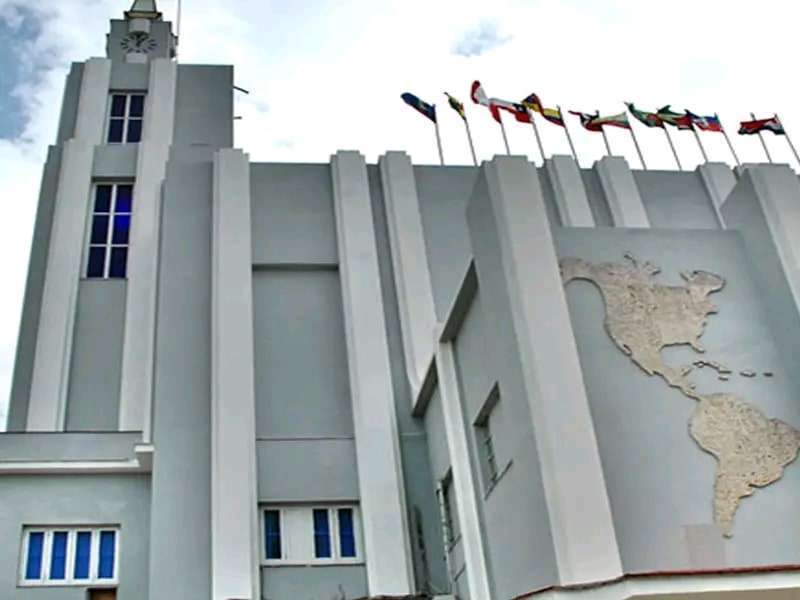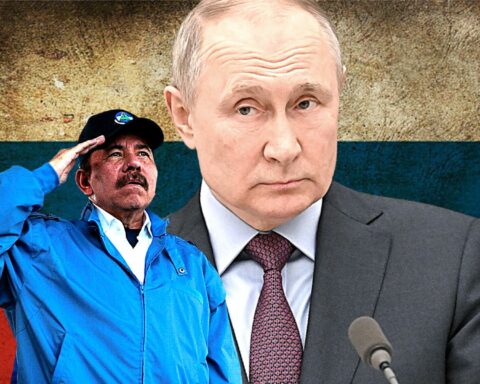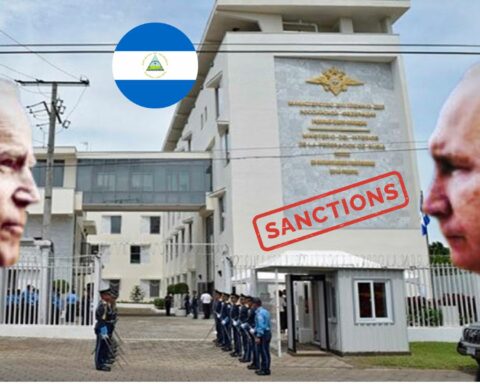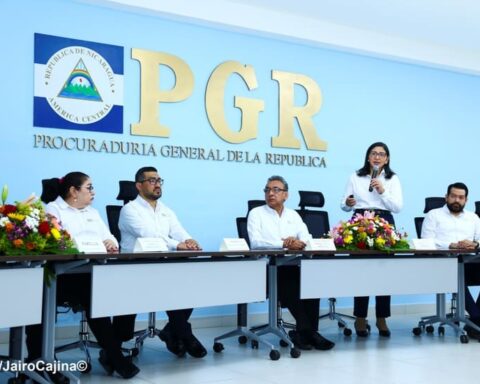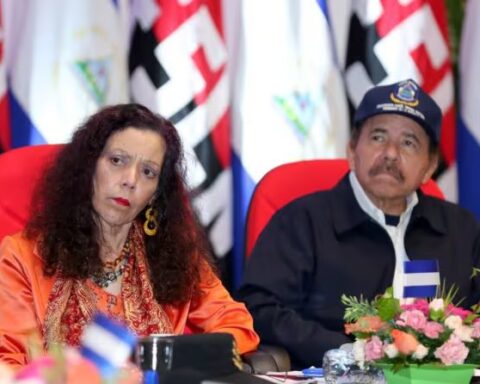This is one of those unlikely things that happen in Nicaragua under the dictatorship of Daniel Ortega and Rosario Murillo: they invested millions of the treasury to build a museum in honor of their holiness John Paul II, and seven years later they keep the doors closed to the public and the pontiff’s memorabilia under police surveillance.
Indeed, no one enters the aforementioned museum and a patrol is in charge of scaring away any clueless tourist who wants to take a picture next to the building absurdly raised and abandoned on the side of the Salvador Allende port, in Managua.
The story is amazing: at a time when the dictatorship flirted with the Catholic Church and some of its leaders fell captive to the power of Sandinista conviction, the presidential couple came up with the idea of building a building to display the belongings of the only pope they have ever visited. twice Nicaragua.
Nuncios and cardinals under the Sandinista spell
Those were times when the dictatorship had conquered the retired cardinal Miguel Obando y Bravo; he had the Apostolic Nuncio Fortunatus Nwachukwu “eating out of his hand” and Cardinal Leopoldo Brenes was close to Vice-dictator Rosario Murillo.
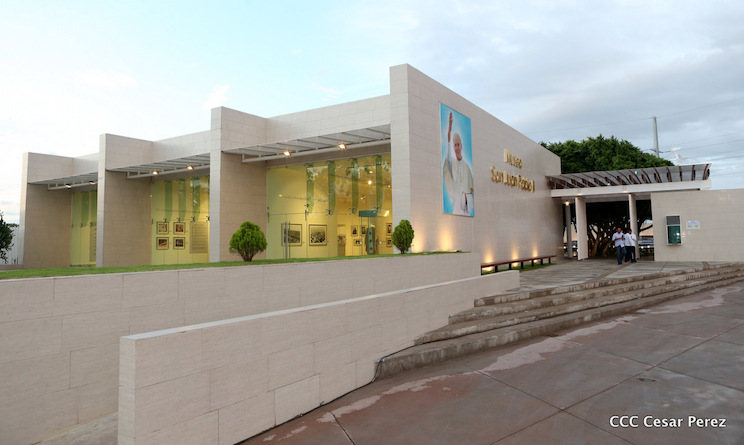
Other priests and priests paid tribute to the power couple, and references to Nicaragua’s Catholic symbols abounded in public speeches.
The building was announced on November 14, 2014 and opened on December 14, 2016; Daniel Ortega, Rosario Murillo and the senior staff of the Catholic Church in Nicaragua arrived at the event.
Murillo exalted the figure of Pope John Paul II: «We are among the few countries… we see the list of countries there and there are few that the holy father visited twice. We were honored with two visits from Saint John Paul. Here is his mark, here is his legacy, here is his spirit, he is with us and that is why I know that he has many devotees in our Nicaragua, where we call on him to ask him to strengthen these routes of reconciliation, encounter, dialogue and Strengthen the youth in the effort to serve to fulfill themselves as useful human beings and to serve the country and make it great, as Darío said, small, but a great one dreams of it, a great one wants it, a great one can make it. Long live the Pope!”
Related news: 40 years of Pope John Paul II’s call for “peace” for Nicaragua
And he also took the opportunity to send greetings to Pope Francis as his birthday approaches: «The Holy Father, Pope Francis, our Latin American pride turns 80 this Saturday, so, from here in this memorial to love, affection, We send the hug, the greeting full of respect and recognition to our Latin American Pope Francis, Pope Francis. May he have many more years ».
Ortega inaugurated the building with a short speech: «We inaugurate this memorial in homage to Saint John Paul II. We can call it a memorial of reconciliation and peace, which he preached, because the words of the Holy Father were full of solidarity, love and peace.”
Without transparency and with cynicism
Both Murillo and Ortega cynically remained silent about that painful episode in the past, when they tried to humiliate the Pope on his first visit to Nicaragua in 1983, in the middle of the civil war, which we will talk about below.
The work cost 45 million córdobas to build the 8,000-square-meter building, according to the 2016 Annual Investment Plan of the Mayor’s Office of Managua. The museum was built by the company Chávez y Chávez Construcciones Sociedad Anónima under a simplified contract and authorized by the secretary of the capital city, Fidel Moreno.
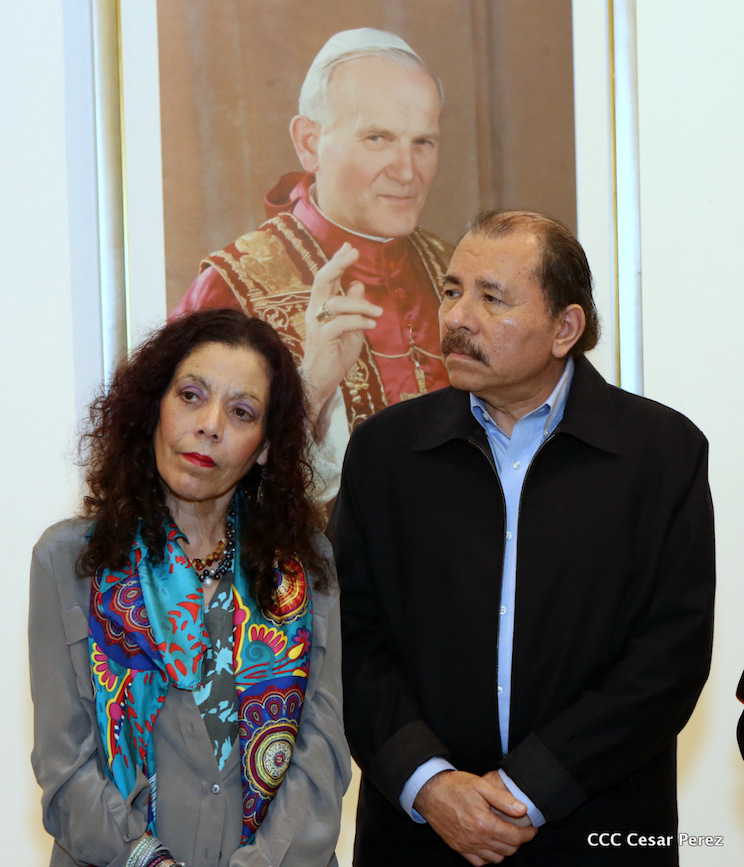
It consists of a prayer chapel, galleries, gardens, a light source and a replica of the bower that housed the Pope on his first visit to Nicaragua in 1983. The museum keeps the relics and items used by Saint John Paul II on his visits to March 1983 and February 1996.
They are exhibited from clothes and towels sent from Rome by the Vatican, used by the Supreme Pontiff to dry his hands after the celebrated mass in the square that today bears his name: Plaza La Fe John Paul II.
The wooden chair that he used, made by artisans from Masaya, is also on display; a metal podium; a minted coin, a commemorative bible published for his visit to three Central American countries and Venezuela, delivered to the former mayor of Managua Roberto Cedeño; the parchment with the presidential decree that gave the square the name Juan Pablo II, as well as a canopy used on the High Altar during his mass.
Memories of the Pope under lock and key
The building includes three galleries with original objects and replicas. Another gallery has photographs of his visits and the service of his mass celebrated in Managua, which were under the protection of the Directorate of Cultural Heritage of the Mayor’s Office of Managua.
A blue wooden armchair with the papal seal that the pontiff used in the Vatican is also exhibited; two rosaries (one white and one black), a commemorative medal of the Pope’s second visit to Nicaragua; the book of the liturgy that the Supreme Pontiff used when presiding over the mass in the Plaza de la Fe; the chair that he used during the Eucharist, the petate that decorated the table of the Eucharist; and a podium that is being repaired, from where he addressed a message to the nation.
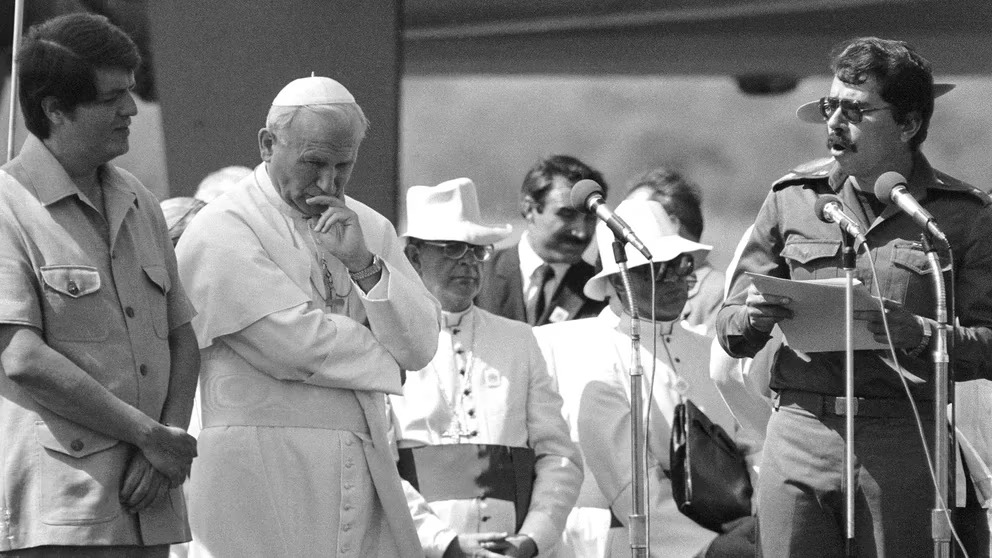
Nothing on display there has ever been shown to the public since its inauguration and they have never explained the reasons.
A Nicaraguan priest consulted for this work, on condition of anonymity due to the high risk involved in making statements about Ortega in Nicaragua, is clear about the reasons why the museum has never opened its doors.
“Ortega at the time gave in to building that museum because he wanted to obtain the favor of the Catholic Church, but he never wanted the Nicaraguan Catholic people to know the history of the pope up close, because part of that history is the pope’s condemnation of the regime. Sandinista who ruled Nicaragua in the 1980s,” he said.
«For that lady (Rosario Murillo), Nicaraguans should not have a leader other than Ortega, it hurts her to see that the people respect, pray and love their Catholic leaders and let alone the Pope, one of the strongest critics of the abuses of the powerful in the history of the popes”, he says.
Origin of Ortega’s hatred of the Pope
Indeed, Daniel Ortega’s history with Pope John Paul II is full of questions. On his holiness’s first visit to Nicaragua, on March 4, 1983, Ortega in person and the FSLN wanted to force the pope to support the Sandinista revolutionbut the religious leader rejected the proposal and, on the contrary, questioned the regime.
The response from the FSLN and Ortega was grotesque: the Sandinista mobs took over the mass and interrupted the mass with loudspeakers with party slogans and shouted that the pope support the revolution.
In this same square where today stands the museum and a huge obelisk in memory of the pope, the pontiff raised his voice to silence the Sandinista mobs: “Silence: the first that wants peace is the (Catholic) Church.”
“The Dark Sandinista Night”
Then the pope came again on February 7, 1996, when President Violeta Barrios de Chamorro ruled. That time he described the period of the first FSLN dictatorship as “the great dark night.”
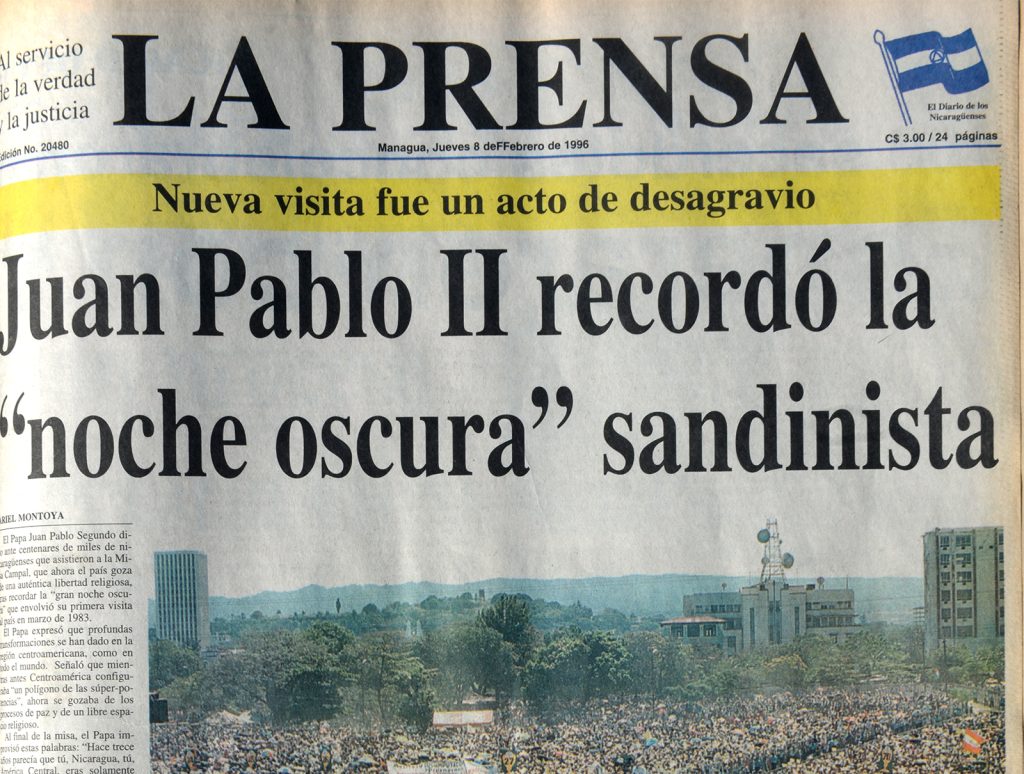
«I remember the celebration of thirteen years ago; it took place in darkness, in a great dark night,” the pope said at the mass he celebrated in Managua.
Karol Józef Wojtyla, his real name, was one of the popes with whom Nicaraguans have most identified, especially for his visit to the country in the context of a civil war and later when peace was established.
Wojtyla, born May 18, 1920 in Poland, was named pope of the Catholic Church from October 16, 1978 until his death on April 2, 2005. He was canonized on April 27, 2014, along with Pope John XXIII , at a mass presided over by Pope Francis, after a miracle attributed to his intervention.
The pope lived during the German occupation of Poland in the 1940s and under the Polish communist system until the late 1970s, from which his rejection of totalitarian regimes such as the Sandinistas was born.
Confiscate John Paul II University
“The Sandinistas never forgot the Pope’s rejection of their repressive measures, which is why Ortega prefers to keep his image and memory locked up,” said the priest.
Indeed, Ortega’s hatred against the Catholic Church and its representatives not only persists, but has increased in aggressiveness. Ortega not only tried to humiliate the pope in 1983 and kept his museum closed, but also confiscated a university named after him: John Paul II Catholic University.
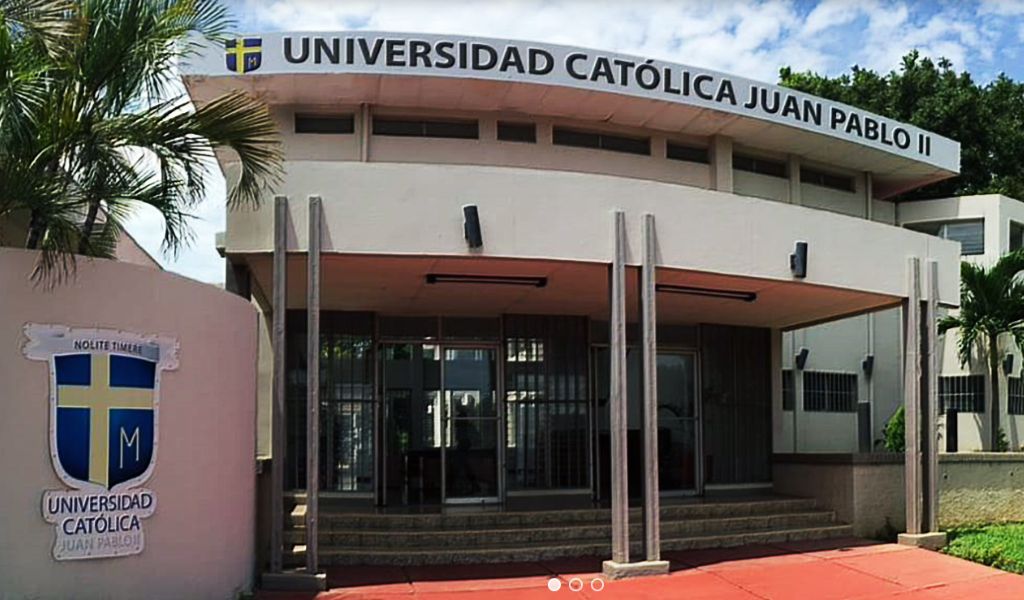
The Ministry of the Interior, the repressive arm of the regime against civil society and trade union organizations, published on March 7 in the official newspaper La Gaceta the cancellations of the legal status of the aforementioned university, based in Managua and four other cities.
He canceled it along with another Catholic university, the Autonomous Christian University of Nicaragua (UCAN), based in León and five other cities. The headquarters of the Juan Pablo II Catholic University and UCAN were confiscated and their students transferred to the National Council of Universities (CNU), an organization under partisan control of the dictatorial Sandinista regime.
Another pope on Ortega’s crooked path
In his war against the Church, Daniel Ortega has called the pope, the priests and the Vatican “mafia” and “terrorists”. In addition, he keeps Bishop Rolando Álvarez in jail, whom he sentenced to 26 years in prison for alleged “treason against the homeland.”
In defense of the church and its members, Pope Francis said that Ortega was unbalanced and described the Sandinista dictatorship as a combination of the communist dictatorship of 1917 and the Hitlerian one of 1935, to end up describing the Sandinista regime as a rude dictatorship, or in Argentine terms, guaranga.
“It is that nothing that comes from the Catholic Church, except the Vatican and its representatives, will be well regarded by Ortega. The light of the Church infuriates him as the devil rages at the word of God, “said the priest.
By United Voices


